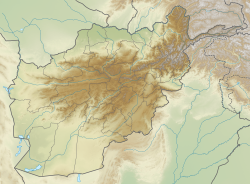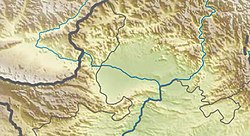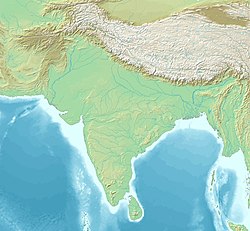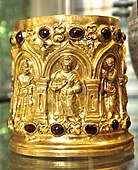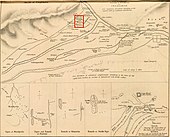Bimaran is a locality, 11 km west of Jalalabad in Afghanistan.[1]
 Remains of Stupas 1, 2, 3, 4, and 5 at Bimaran in 1841. Drawings by Charles Masson. | |
| Coordinates | 34°28′N 70°21′E / 34.47°N 70.35°E |
|---|---|
| Type | Stupa |
It is well known for the discovery of the Bimaran casket in one of the stupas (stupa Nb 2) located at Bimaran.[1]
Altogether five ancient stupas are known in Bimaran, all dating to the 1st century BCE-1st century CE:
- Stupa No1: 34°27′15″N 70°21′16″E / 34.454155°N 70.354553°E, in the fields southeast of the Bimaran village. It has a circumference of 38.40 meters.
- Stupa No2: 34°27′24″N 70°20′51″E / 34.456668°N 70.347405°E, in the Bimaran village. It has a circumference of 43.90 meters.
- Stupa No3: 34°27′34″N 70°20′49″E / 34.459454°N 70.347074°E, in the Bimaran village. It has a circumference of 33 meters.
- Stupa No4: 34°27′34″N 70°20′46″E / 34.459472°N 70.346067°E, in the Bimaran village. It has a circumference of 43.9 meters.
Nearby is:
- Passani Stupa No1: 34°27′19″N 70°20′38″E / 34.455333°N 70.343820°E
-
The Bimaran casket
-
Stupas around Jelalabad, Bimaran area highlighted
-
The Stupa Nb.2 at Bimaran, where the Bimaran casket was excavated. Drawing by Charles Masson.
External links
edit- Media related to Bimaran at Wikimedia Commons
- Bimaran (US Department of Defense) Archived 2015-07-17 at the Wayback Machine, via Colorado State University
References
edit- ^ a b DATING AND LOCATING MUJATRIA AND THE TWO KHARAHOSTES by Joe Cribb, 2015, p.27 et sig
